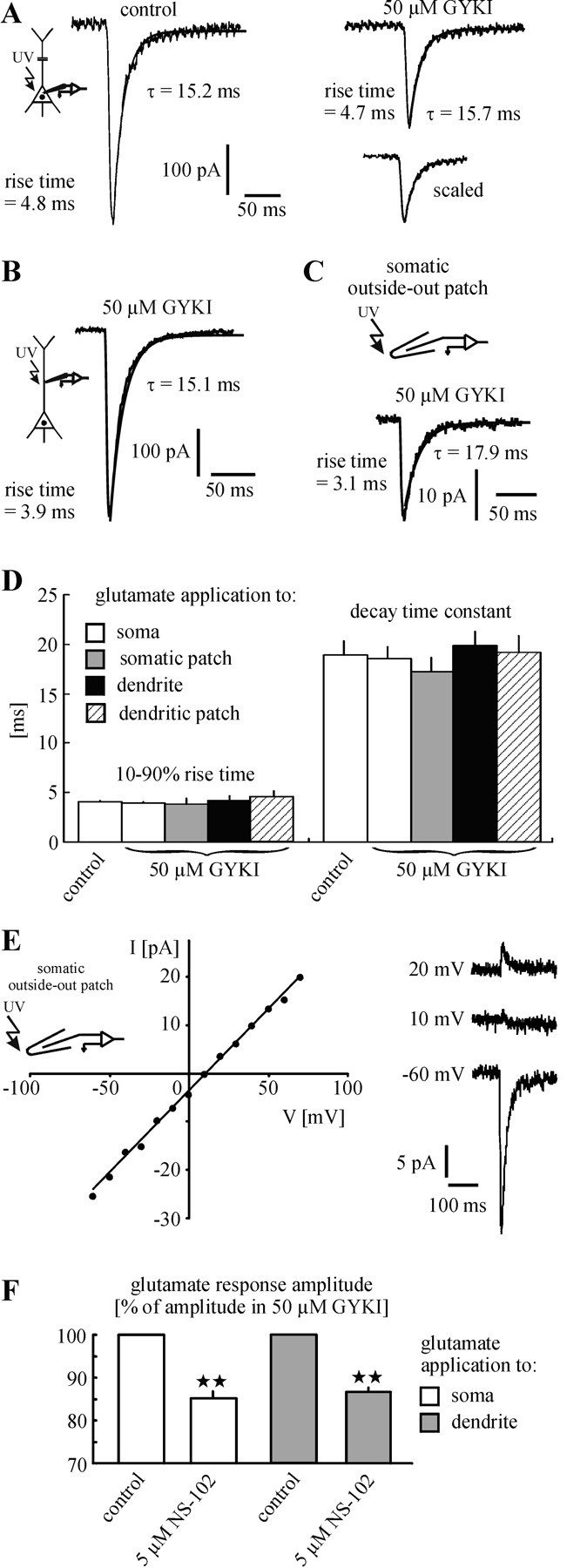Figure 2.

Properties of KARs. A-D, KARs on layer V pyramidal neurons show fast kinetics similar to those of AMPARs. Statistical evaluation revealed no difference between the rise time values of mixed AMPA/KAR-mediated responses (control) and pure KAR-mediated currents that were evoked at the soma (A). This is also the case for the decay time constant (τ). Comparison of the kinetics of KAR-mediated responses, which were elicited at somata (A), somatic outside-out patches (C), apical dendrites (B), and dendritic outside-out patches (no example shown; see Figs. 1B, 4C) revealed no significant differences (D). This result refers to identical unitary properties of somatic and dendritic KARs. A-C show single traces. The current decay was best fit monoexponentially (smooth lines). E, KAR-mediated responses, which were evoked at somatic outside-out patches, showed a linear I-V relationship and had a mean reversal potential of 7 ± 2 mV (n = 6 patches). A single experiment is shown. F, The GluR5/GluR6 antagonist NS-102 decreased the amplitude of KAR-mediated currents that were elicited at the soma and apical dendrite. This result refers to an involvement of GluR5 and/or GluR6 in the formation of KARs on layer V pyramidal neurons.
